I just replaced my 8” SCT for a SkyWatcher Esprit 150. So far I am happy to report that the first light shows the field is 100% flat. BUT…(there is always one in this hobby…) when I look closely at the frames, the bright stars have 6 point spikes on the images taken with the red and green filter. The issue is not that noticeable on the blue filter (odd, right?). The temperature at the remote observatory has been below 0 °C, so my first thought was: “damn…this scope has pinched optics”. But I find it weird that the artifact is not that noticeable on the blue filter (it also shows on HA and SII, not so much on OIII) . Tonight (weather permitting) I will take more test frames with all the filters to see what comes up. I am already talking with the shop that sold me the telescope. I will document everything for SkyWatcher’s Tech Support to evaluate the issue, but I will appreciate if you can take a look at the issue and give me your thoughts. Thanks in advance for your help! Wanda 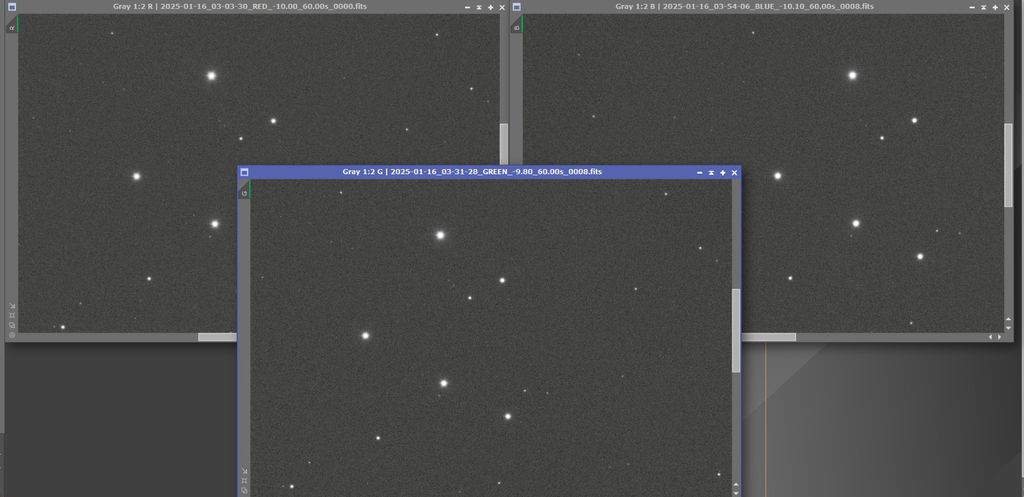 |
You cannot like this item. Reason: "ANONYMOUS".
You cannot remove your like from this item.
Editing a post is only allowed within 24 hours after creating it.
You cannot Like this post because the topic is closed.
Copy the URL below to share a direct link to this post.
This post cannot be edited using the classic forums editor.
To edit this post, please enable the "New forums experience" in your settings.
There is some kind of a diffraction effect happening, from what I have no idea. The fact that it's worse at different wavelength also points to diffraction as the cause. I really don't think it's pinched optics as the stars are round. One thing that would help to figure this out would be an image of a bright star well out of focus.
|
You cannot like this item. Reason: "ANONYMOUS".
You cannot remove your like from this item.
Editing a post is only allowed within 24 hours after creating it.
You cannot Like this post because the topic is closed.
Copy the URL below to share a direct link to this post.
This post cannot be edited using the classic forums editor.
To edit this post, please enable the "New forums experience" in your settings.
Tony Gondola:
There is some kind of a diffraction effect happening, from what I have no idea. The fact that it's worse at different wavelength also points to diffraction as the cause. I really don't think it's pinched optics as the stars are round. One thing that would help to figure this out would be an image of a bright star well out of focus. Thanks for chiming in! That’s exactly my concern. Thank you for the recommendation. I am troubleshooting tonight and will make sure to do as you suggest. CS, Wanda
|
You cannot like this item. Reason: "ANONYMOUS".
You cannot remove your like from this item.
Editing a post is only allowed within 24 hours after creating it.
You cannot Like this post because the topic is closed.
Copy the URL below to share a direct link to this post.
This post cannot be edited using the classic forums editor.
To edit this post, please enable the "New forums experience" in your settings.
I don't know exactly what is the cause in your OTA, but I have seen something similar on both of the TOA-130 scopes I own. They get worse the colder it gets, typically when it hits under 0. I emailed Takahashi and they made some suggestions, either a dew heater strap or loosening some screws. I decided it is not worth messing with. A dew heater strap helped quite a bit and was far less invasive. Did not completely solve it but it was good enough. The scopes are otherwise perfect with the most flat field on a full frame I have ever experienced. 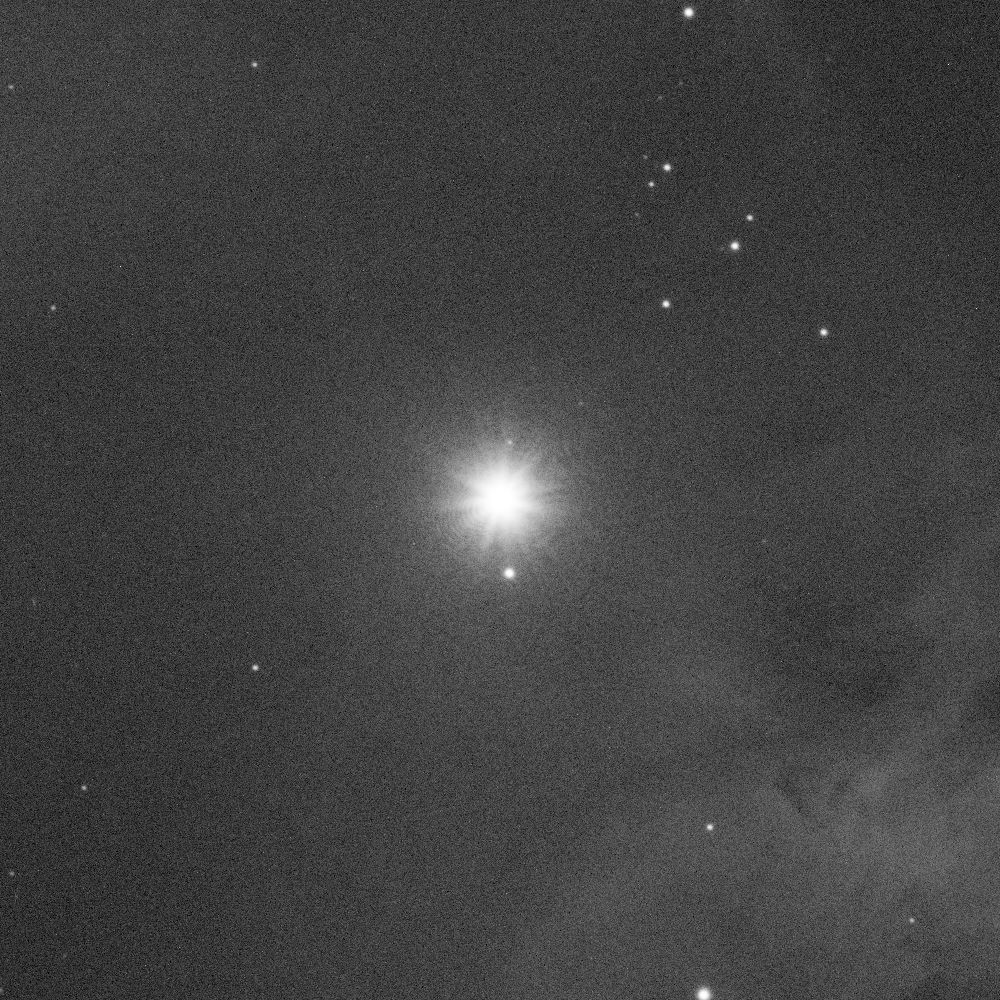 Frankly they don't bother me at all and they seem far less prominent in the final stacked image. But I am curious what Skywatcher says. Here is the response from Takahashi : Some glasses are pretty sensitive to temperature change and FPL-53 isone of these. It contains approx. 40% Fluorite and the TOA designincorporates two of these elements. Sometimes, the optics willequalize on their own and the effects will go away after an hour ortwo. Some customers will wrap a Dew Heater around the back of thelens cell or dew shield. This may warm up the objective enough toimprove the performance. The other option is to loosen some of thescrews used for collimating the objective. This is not something Irecommend as it can affect the collimation as well as color correctionof the instrument. One thing you might try that sometimes has an effect is to loosen andthen tighten the beauty ring on the front of the lens cell. This ringis merely a cover and thread protector - it has the lettering on itstating the aperture and focal length. To get to it you must firstremove the dew shield. It simply unthreads from the white retainingring behind it. With the dew shield out of the way you can unthreadthe beauty ring. Sometimes these are threaded too tight so justloosen it and then tighten it again -- but not too tight. It shouldbe snug enough that it won't loosen up on its own. One wouldn't thinkit would make any difference but it does. The last thing you can check are the recessed collimation screws forthe rear element. These are countersunk into the lens cell. Thereare three sets of push-pull screws. Each set has one pull screw inthe center with two smaller push screws on either side. You can takea long Allen wrench and loosen then re-tighten the pull screws. DoNot Attempt to Adjust the Push Screws. Do this carefully, one at atime. These should be snug but not cranked down super tight. Again,you don't want these to back out during transport so they need to bemoderately tight. These screws actually hold the lens cell on thetube. If they are removed then the entire objective cell will comeoff the tube. You only want to try adjusting the tension on thesethree screws. Do not try to do anything with the screws sticking outin the very front of the objective. These are very fine collimationscrews that adjust the front two elements and are super sensitive.Provided the rear Pull screws are evenly tightened then you shouldn'taffect collimation. |
You cannot like this item. Reason: "ANONYMOUS".
You cannot remove your like from this item.
Editing a post is only allowed within 24 hours after creating it.
You cannot Like this post because the topic is closed.
Copy the URL below to share a direct link to this post.
This post cannot be edited using the classic forums editor.
To edit this post, please enable the "New forums experience" in your settings.
Ashraf AbuSara:
I don't know exactly what is the cause in your OTA, but I have seen something similar on both of the TOA-130 scopes I own. They get worse the colder it gets, typically when it hits under 0. I emailed Takahashi and they made some suggestions, either a dew heater strap or loosening some screws. I decided it is not worth messing with. A dew heater strap helped quite a bit and was far less invasive. Did not completely solve it but it was good enough. The scopes are otherwise perfect with the most flat field on a full frame I have ever experienced.

Frankly they don't bother me at all and they seem far less prominent in the final stacked image.
But I am curious what Skywatcher says.
Here is the response from Takahashi :
Some glasses are pretty sensitive to temperature change and FPL-53 isone of these. It contains approx. 40% Fluorite and the TOA designincorporates two of these elements. Sometimes, the optics willequalize on their own and the effects will go away after an hour ortwo. Some customers will wrap a Dew Heater around the back of thelens cell or dew shield. This may warm up the objective enough toimprove the performance. The other option is to loosen some of thescrews used for collimating the objective. This is not something Irecommend as it can affect the collimation as well as color correctionof the instrument. One thing you might try that sometimes has an effect is to loosen andthen tighten the beauty ring on the front of the lens cell. This ringis merely a cover and thread protector - it has the lettering on itstating the aperture and focal length. To get to it you must firstremove the dew shield. It simply unthreads from the white retainingring behind it. With the dew shield out of the way you can unthreadthe beauty ring. Sometimes these are threaded too tight so justloosen it and then tighten it again -- but not too tight. It shouldbe snug enough that it won't loosen up on its own. One wouldn't thinkit would make any difference but it does. The last thing you can check are the recessed collimation screws forthe rear element. These are countersunk into the lens cell. Thereare three sets of push-pull screws. Each set has one pull screw inthe center with two smaller push screws on either side. You can takea long Allen wrench and loosen then re-tighten the pull screws. DoNot Attempt to Adjust the Push Screws. Do this carefully, one at atime. These should be snug but not cranked down super tight. Again,you don't want these to back out during transport so they need to bemoderately tight. These screws actually hold the lens cell on thetube. If they are removed then the entire objective cell will comeoff the tube. You only want to try adjusting the tension on thesethree screws. Do not try to do anything with the screws sticking outin the very front of the objective. These are very fine collimationscrews that adjust the front two elements and are super sensitive.Provided the rear Pull screws are evenly tightened then you shouldn'taffect collimation. Thanks for your input. I have to say that I am a bit dumbfounded to see that even Takahashis may suffer from this. I am documenting everything for Skywatcher Tech Support to evaluate and provide feedback. I will definitely share here what they say. Stay tuned! Once again thanks and clear skies! Wanda
|
You cannot like this item. Reason: "ANONYMOUS".
You cannot remove your like from this item.
Editing a post is only allowed within 24 hours after creating it.
You cannot Like this post because the topic is closed.
Copy the URL below to share a direct link to this post.
This post cannot be edited using the classic forums editor.
To edit this post, please enable the "New forums experience" in your settings.
It's the front element response to dropping temperature and it is known to vary with wavelength (as their index of refraction does). It is more prominent in front-heavy lens, including my 500mm AF-S F/4 so I expect that to fairly typical for 5"+ refractors.
|
You cannot like this item. Reason: "ANONYMOUS".
You cannot remove your like from this item.
Editing a post is only allowed within 24 hours after creating it.
You cannot Like this post because the topic is closed.
Copy the URL below to share a direct link to this post.
This post cannot be edited using the classic forums editor.
To edit this post, please enable the "New forums experience" in your settings.
Hi .. I have the same spikes in my images and I think it comes from the 3 washer to hold filters!!
They are diffraction spikes !!
|
You cannot like this item. Reason: "ANONYMOUS".
You cannot remove your like from this item.
Editing a post is only allowed within 24 hours after creating it.
You cannot Like this post because the topic is closed.
Copy the URL below to share a direct link to this post.
This post cannot be edited using the classic forums editor.
To edit this post, please enable the "New forums experience" in your settings.
Got same "problem" with my 150ED that I purchased a while ago. Due to bad weather my first real chance to test it was a couple of nights ago. This is from a stack of 212 subs (120s), aprox 7 hours. Slightly stretched with GHS after gradiant removel (Seti ADBE), SPCC and NXT (70%). No BlurX used on this one. Optical train is Antlia combined OAG and filter holder, but no filter in the holder, and the asi2600mc. 2 pics, large star in the first, heavier zoom at the bottom right corner in the second. Subs are taken at minus 8 celsius and normal seeing for the coast of northern Norway. Look forward to hear what SkyWatcher says, Wanda ? 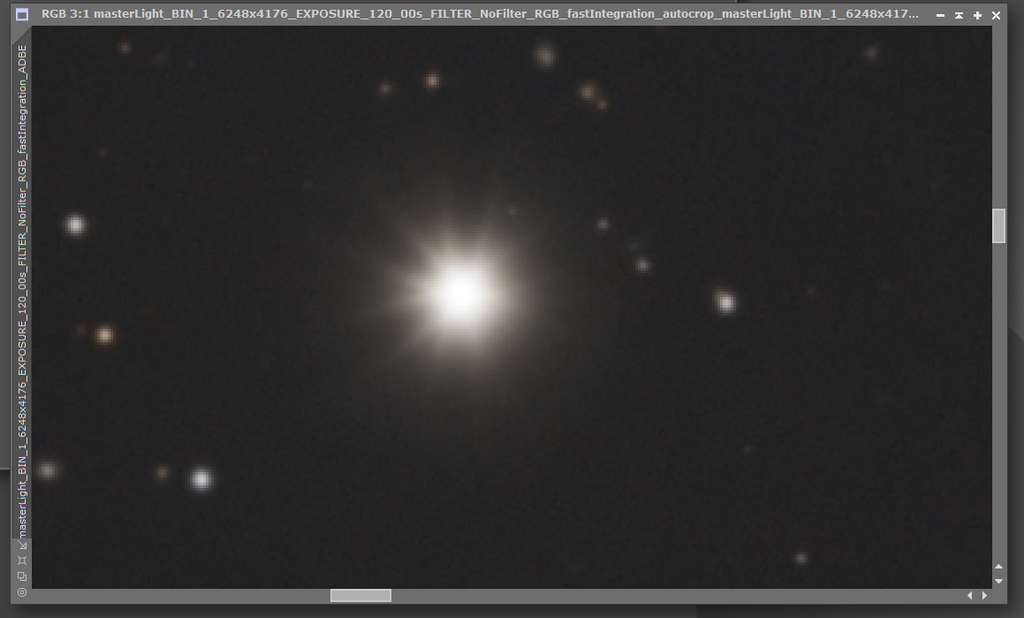 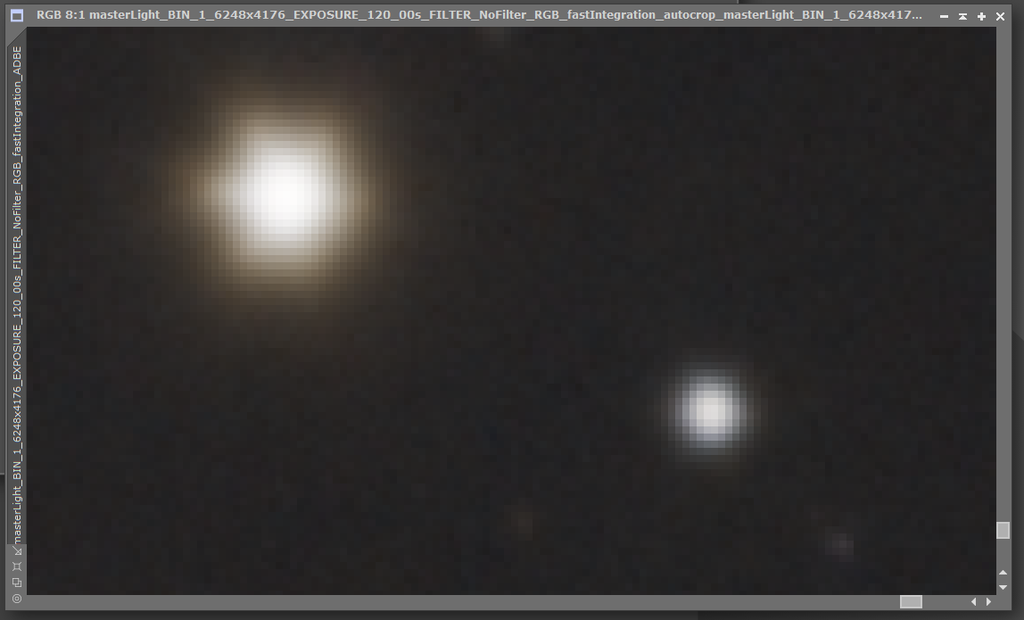 |
You cannot like this item. Reason: "ANONYMOUS".
You cannot remove your like from this item.
Editing a post is only allowed within 24 hours after creating it.
You cannot Like this post because the topic is closed.
Copy the URL below to share a direct link to this post.
This post cannot be edited using the classic forums editor.
To edit this post, please enable the "New forums experience" in your settings.
I work for Telescopes Canada and we've had similar issues crop up with the Esprit (and other scopes). Sky Watcher told us that the Esprit is only rated to 0°C because of the very issue you're running into. You can't change the physical properties of the glass… maybe they can use more exotic glass but you'd be paying 10x the price (if not even more).
|
You cannot like this item. Reason: "ANONYMOUS".
You cannot remove your like from this item.
Editing a post is only allowed within 24 hours after creating it.
You cannot Like this post because the topic is closed.
Copy the URL below to share a direct link to this post.
This post cannot be edited using the classic forums editor.
To edit this post, please enable the "New forums experience" in your settings.
Kevin Galka:
I work for Telescopes Canada and we've had similar issues crop up with the Esprit (and other scopes). Sky Watcher told us that the Esprit is only rated to 0°C because of the very issue you're running into. You can't change the physical properties of the glass... maybe they can use more exotic glass but you'd be paying 10x the price (if not even more). Thanks for your comment ! That is what I've been worried about. Been looking through some Esprit and Takahashi pics on AstroBin where I can see similar shapes. Oh well, probably have to live with it then. Luckily winters are not that bad here on the coast, we normally have temperatures above freezing.
|
You cannot like this item. Reason: "ANONYMOUS".
You cannot remove your like from this item.
Editing a post is only allowed within 24 hours after creating it.
You cannot Like this post because the topic is closed.
Copy the URL below to share a direct link to this post.
This post cannot be edited using the classic forums editor.
To edit this post, please enable the "New forums experience" in your settings.
It really is starting to look like this is the price you pay with at least some refractor designs at very low temperatures. Depending on the design there are constraints on centering and other considerations that are going to limit how much play you can have in the lens cell. Also, different glass formulations will respond slightly differently to temp. change. If that is what is happening here, the only solutions I can see without changing the design would be to make the cell out of low expansion materials or at least from something that's closer to the average expansion coefficient of the elements. I also wonder if there would be a price to pay on heating the cell and elements just enough to keep everything within tolerances.
|
You cannot like this item. Reason: "ANONYMOUS".
You cannot remove your like from this item.
Editing a post is only allowed within 24 hours after creating it.
You cannot Like this post because the topic is closed.
Copy the URL below to share a direct link to this post.
This post cannot be edited using the classic forums editor.
To edit this post, please enable the "New forums experience" in your settings.
Tony Gondola:
I also wonder if there would be a price to pay on heating the cell and elements just enough to keep everything within tolerances. I use a dewheater strap on the dew shield. With AsiAir I put it at 50%. Maybe I should go for 100% and see if it makes a difference. Have to find out where the elements are in the tube, maybe I one can try additional dew straps ?
|
You cannot like this item. Reason: "ANONYMOUS".
You cannot remove your like from this item.
Editing a post is only allowed within 24 hours after creating it.
You cannot Like this post because the topic is closed.
Copy the URL below to share a direct link to this post.
This post cannot be edited using the classic forums editor.
To edit this post, please enable the "New forums experience" in your settings.
Jose Antonio Manuel:
Hi .. I have the same spikes in my images and I think it comes from the 3 washer to hold filters!!
They are diffraction spikes !! In my case I am pretty sure is something else. These past few days I’ve been imaging at different temperatures over 0 degrees Celsius and I’ve noticed that the pattern is less noticeable when it gets warmer.
|
You cannot like this item. Reason: "ANONYMOUS".
You cannot remove your like from this item.
Editing a post is only allowed within 24 hours after creating it.
You cannot Like this post because the topic is closed.
Copy the URL below to share a direct link to this post.
This post cannot be edited using the classic forums editor.
To edit this post, please enable the "New forums experience" in your settings.
Gunder Strømberg:
Got same "problem" with my 150ED that I purchased a while ago. Due to bad weather my first real chance to test it was a couple of nights ago.
This is from a stack of 212 subs (120s), aprox 7 hours.
Slightly stretched with GHS after gradiant removel (Seti ADBE), SPCC and NXT (70%). No BlurX used on this one.
Optical train is Antlia combined OAG and filter holder, but no filter in the holder, and the asi2600mc.
2 pics, large star in the first, heavier zoom at the bottom right corner in the second.
Subs are taken at minus 8 celsius and normal seeing for the coast of northern Norway.
Look forward to hear what SkyWatcher says, Wanda ?

 The pattern you get is basically the same I get. I’ve been able to image over the past few nights with temperatures between 3 - 5 degrees Celsius and I noticed the diffraction pattern becomes less noticeable. The owner from the shop where I bought the telescope agreed that it could be pinched optics and Skywatcher agreed for me to send the telescope back to be checked by their technician. Will report back what they find and if the issue gets fixed.
|
You cannot like this item. Reason: "ANONYMOUS".
You cannot remove your like from this item.
Editing a post is only allowed within 24 hours after creating it.
You cannot Like this post because the topic is closed.
Copy the URL below to share a direct link to this post.
This post cannot be edited using the classic forums editor.
To edit this post, please enable the "New forums experience" in your settings.
Kevin Galka:
I work for Telescopes Canada and we've had similar issues crop up with the Esprit (and other scopes). Sky Watcher told us that the Esprit is only rated to 0°C because of the very issue you're running into. You can't change the physical properties of the glass... maybe they can use more exotic glass but you'd be paying 10x the price (if not even more). Thanks for the information. It is very useful. Like I mentioned in a previous response, I noticed that the diffraction pattern is less noticeable when the temperature gets over 0°C, but never disappears. Skywatcher agreed to check it under warranty. Overall, I am very happy with the telescope. We’ll see what they respond.
|
You cannot like this item. Reason: "ANONYMOUS".
You cannot remove your like from this item.
Editing a post is only allowed within 24 hours after creating it.
You cannot Like this post because the topic is closed.
Copy the URL below to share a direct link to this post.
This post cannot be edited using the classic forums editor.
To edit this post, please enable the "New forums experience" in your settings.
Tony Gondola:
It really is starting to look like this is the price you pay with at least some refractor designs at very low temperatures. Depending on the design there are constraints on centering and other considerations that are going to limit how much play you can have in the lens cell. Also, different glass formulations will respond slightly differently to temp. change. If that is what is happening here, the only solutions I can see without changing the design would be to make the cell out of low expansion materials or at least from something that's closer to the average expansion coefficient of the elements. I also wonder if there would be a price to pay on heating the cell and elements just enough to keep everything within tolerances. I thought about placing the dew heater inside the dew shield. That way it would be closer to the lens cell and probably reduce/mitigate the effect of very low temperatures.
|
You cannot like this item. Reason: "ANONYMOUS".
You cannot remove your like from this item.
Editing a post is only allowed within 24 hours after creating it.
You cannot Like this post because the topic is closed.
Copy the URL below to share a direct link to this post.
This post cannot be edited using the classic forums editor.
To edit this post, please enable the "New forums experience" in your settings.
Right around the lens cell if possible…
|
You cannot like this item. Reason: "ANONYMOUS".
You cannot remove your like from this item.
Editing a post is only allowed within 24 hours after creating it.
You cannot Like this post because the topic is closed.
Copy the URL below to share a direct link to this post.
This post cannot be edited using the classic forums editor.
To edit this post, please enable the "New forums experience" in your settings.
I have to ask, what does a defocused star image look like at low temps?
|
You cannot like this item. Reason: "ANONYMOUS".
You cannot remove your like from this item.
Editing a post is only allowed within 24 hours after creating it.
You cannot Like this post because the topic is closed.
Copy the URL below to share a direct link to this post.
This post cannot be edited using the classic forums editor.
To edit this post, please enable the "New forums experience" in your settings.
This is what I get from My Esprit 100, here in the U.K., this was taken at -2.5 degrees centigrade, a few weeks ago, with a powerful dew strap on 75% power, around the outside of the dew shield above the lens cell. Straight from the camera, with just stretch and background removal, BUT no BlurX I am more than happy with this. 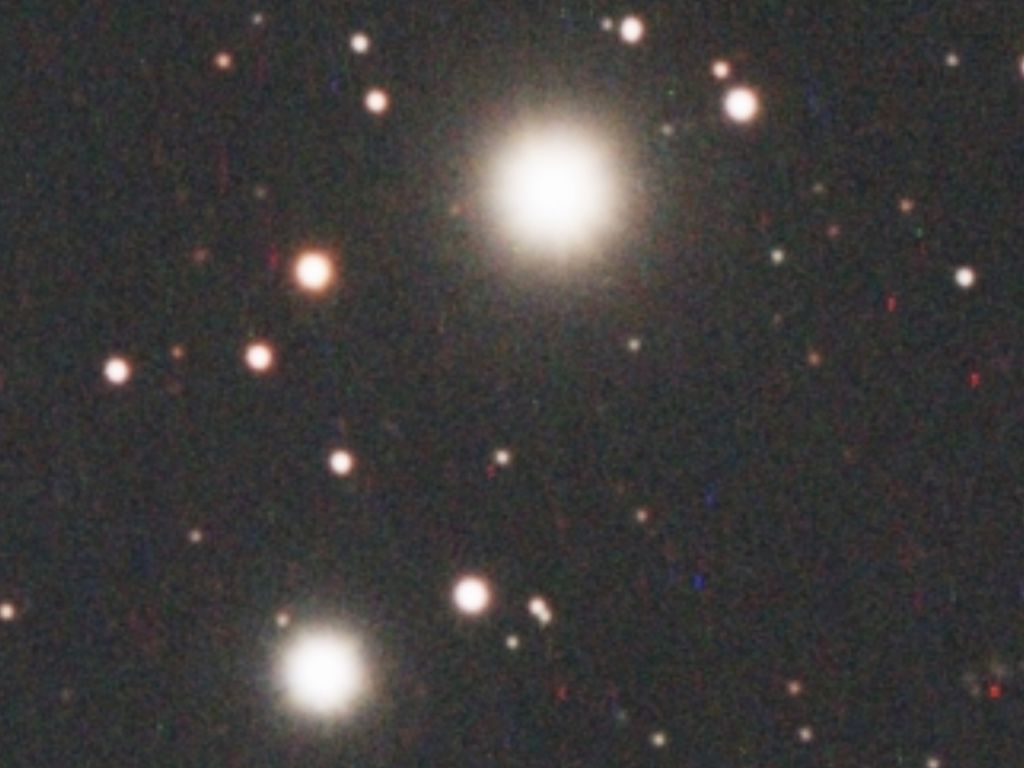 |
You cannot like this item. Reason: "ANONYMOUS".
You cannot remove your like from this item.
Editing a post is only allowed within 24 hours after creating it.
You cannot Like this post because the topic is closed.
Copy the URL below to share a direct link to this post.
This post cannot be edited using the classic forums editor.
To edit this post, please enable the "New forums experience" in your settings.
This is the final image the above example was taken from, as I said no BlurX just a slight crop, stretched and background calibration, did not even use any calibration frames. 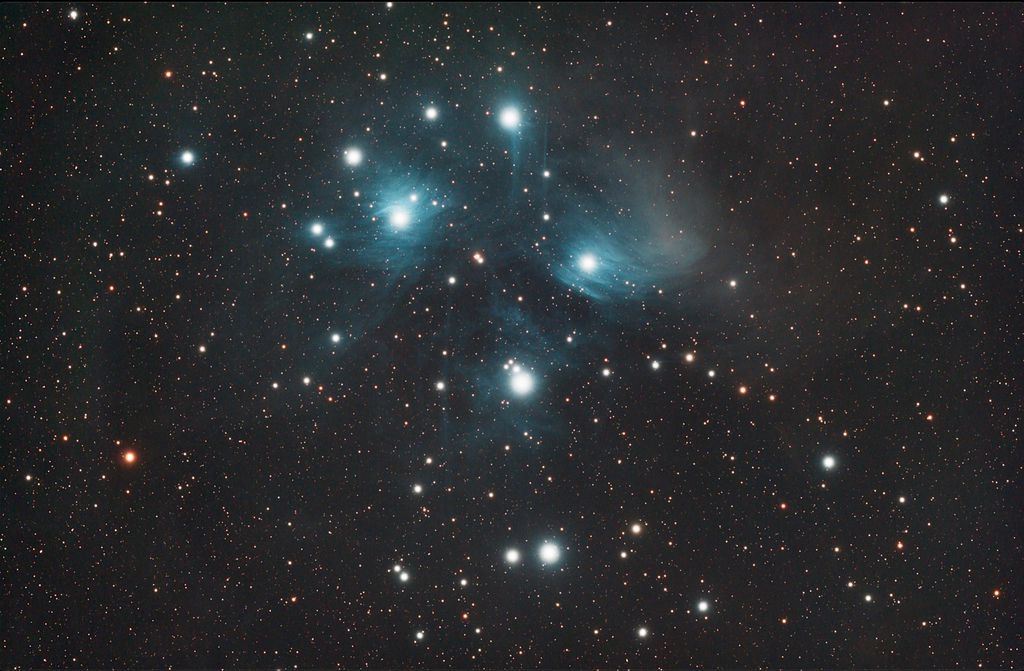 |
You cannot like this item. Reason: "ANONYMOUS".
You cannot remove your like from this item.
Editing a post is only allowed within 24 hours after creating it.
You cannot Like this post because the topic is closed.
Copy the URL below to share a direct link to this post.
This post cannot be edited using the classic forums editor.
To edit this post, please enable the "New forums experience" in your settings.
AstroShed:
This is what I get from My Esprit 100, here in the U.K., this was taken at -2.5 degrees, ... Is that F or C?
|
You cannot like this item. Reason: "ANONYMOUS".
You cannot remove your like from this item.
Editing a post is only allowed within 24 hours after creating it.
You cannot Like this post because the topic is closed.
Copy the URL below to share a direct link to this post.
This post cannot be edited using the classic forums editor.
To edit this post, please enable the "New forums experience" in your settings.
Jeffery Richards:
AstroShed:
This is what I get from My Esprit 100, here in the U.K., this was taken at -2.5 degrees, ...
Is that F or C? C, I only use degrees C as in Uk..👍🏻
|
You cannot like this item. Reason: "ANONYMOUS".
You cannot remove your like from this item.
Editing a post is only allowed within 24 hours after creating it.
You cannot Like this post because the topic is closed.
Copy the URL below to share a direct link to this post.
This post cannot be edited using the classic forums editor.
To edit this post, please enable the "New forums experience" in your settings.
AstroShed:
Jeffery Richards:
AstroShed:
This is what I get from My Esprit 100, here in the U.K., this was taken at -2.5 degrees, ...
Is that F or C?
C, I only use degrees C as in Uk..👍🏻 That's what I figured but wanted it to be clear for everyone. -2.5C is significantly different that -2.5F. I would expect most optics to operate fine at -2.5C.
|
You cannot like this item. Reason: "ANONYMOUS".
You cannot remove your like from this item.
Editing a post is only allowed within 24 hours after creating it.
You cannot Like this post because the topic is closed.
Copy the URL below to share a direct link to this post.
This post cannot be edited using the classic forums editor.
To edit this post, please enable the "New forums experience" in your settings.
AstroShed:
Jeffery Richards:
AstroShed:
This is what I get from My Esprit 100, here in the U.K., this was taken at -2.5 degrees, ...
Is that F or C?
C, I only use degrees C as in Uk..👍🏻 also entire rest of the civilised world ;)
|
You cannot like this item. Reason: "ANONYMOUS".
You cannot remove your like from this item.
Editing a post is only allowed within 24 hours after creating it.
You cannot Like this post because the topic is closed.
Copy the URL below to share a direct link to this post.
This post cannot be edited using the classic forums editor.
To edit this post, please enable the "New forums experience" in your settings.
Jeffery Richards:
AstroShed:
Jeffery Richards:
AstroShed:
This is what I get from My Esprit 100, here in the U.K., this was taken at -2.5 degrees, ...
Is that F or C?
C, I only use degrees C as in Uk..👍🏻
That's what I figured but wanted it to be clear for everyone. -2.5C is significantly different that -2.5F. I would expect most optics to operate fine at -2.5C. Well clearly not as that is what this thread is all about, have you read the first post or not…? If so you will se that he is having issues at or just below 0 degrees C, and with the same optics I was saying that mine is good at these temps…
|
You cannot like this item. Reason: "ANONYMOUS".
You cannot remove your like from this item.
Editing a post is only allowed within 24 hours after creating it.
You cannot Like this post because the topic is closed.
Copy the URL below to share a direct link to this post.
This post cannot be edited using the classic forums editor.
To edit this post, please enable the "New forums experience" in your settings.








